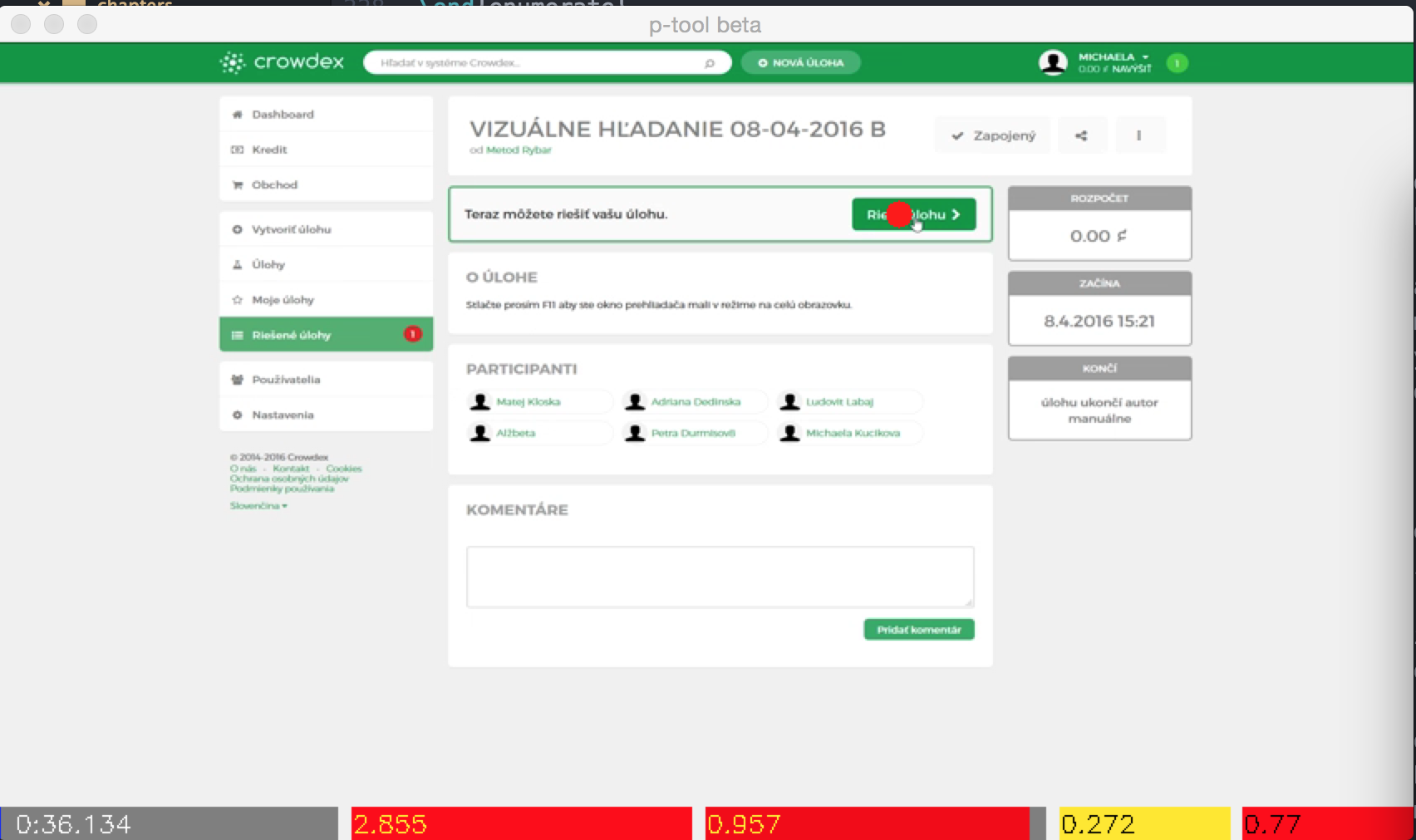|
Measuring Cognitive Overload in Human Computer Interaction Tomáš Juhaniak Bachelor thesis project supervised by prof. Mária Bieliková |
Motivation
Measuring of cognitive load can be done by plenty of ways, but it is important to make it non-intrusive and in real time. If we want evaluate real applications, we need a tool with an ability to measure cognitive load in complex long-term tasks, with big amount of participants, without requirements of human expert or laboratory environment (except keeping eye-tracker). Moreover this all have to be done fully-automated for arbitrary real, non-preprocessed tasks.
The contribution of our work is a method for evaluating cognitive load based on personalized pupillary response model (PPR model) and absolute values of pupil diameter.
Method
Our method consists of PPR model calibration using many stimuli with different luminosity values. Next, while the tested person work on their tasks, we record the presented stimuli and compute their luminosity with consideration of the fixation area. With the help of PPR model, we predict the actual pupil diameter or the trend of pupil dilation. The difference between measured and predicted values is filtered out according to psychological factors. We also made interactive application, which displays actual cognitive load directly in video record, as is shown in figure below. Displayed numbers represent timestamp, actual pupil, computed luminosity, actual cognitive load and delayed cognitive load.

Evaluation
For each participant, we have trained their PMPR model (over portion of plain color and two-color stimuli recordings) and tested the prediction on the rest (rest of plain color images and web pages). For both plain color stimuli and web pages, the relative prediction error of our model was up to 5% (of the total dilation range of participants). The highest error for plain color stimuli reached 10%, for web pages 15%. Furthermore, the success rate of prediction over web stimuli varied (for some participants, the model consistently predicted better than for others).
For those participants which were asked to solve sudoku, we measured wider pupil as were predicted for sudoku stimuli, thus we can say, we detected cognitive load in this task.
Finally, 20 participants tried to solve prepared math tasks with four levels of difficulty. The tasks were shown on the same group of stimuli which were used in evaluation of prediction. Computed correlation coefficient between task's difficulty and pertaining measured cognitive overload was 0.8.
Publications
- Juhaniak, T.
- Measuring Cognitive Overload For Use of Software Applications.
Bachelor thesis, Slovak University of Technology in Bratislava 2016.
 pdf (in Slovak)
pdf (in Slovak)
- Juhaniak, T.
- Robust Detection of User's Cognitive Load Using Personalized Pupillary Response Model. In Proc. in Informatics and Information Technology Student Research Conference IIT.SRC 2016.
- Juhaniak, T., Hlaváč, P., Móro, R., Šimko, J., Bielikova, M.
- Pupillary Response: Removing Screen Luminosity Effects for Clearer Implicit Feedback. Poster. In Ext. Proc. of UMAP 2016: 24th ACM Conf. on User Modeling, Adaptation and Personalisation, CEUR, Vol. 1618.
| to Homepage | to Teaching | to the Top |
|
||
|
||